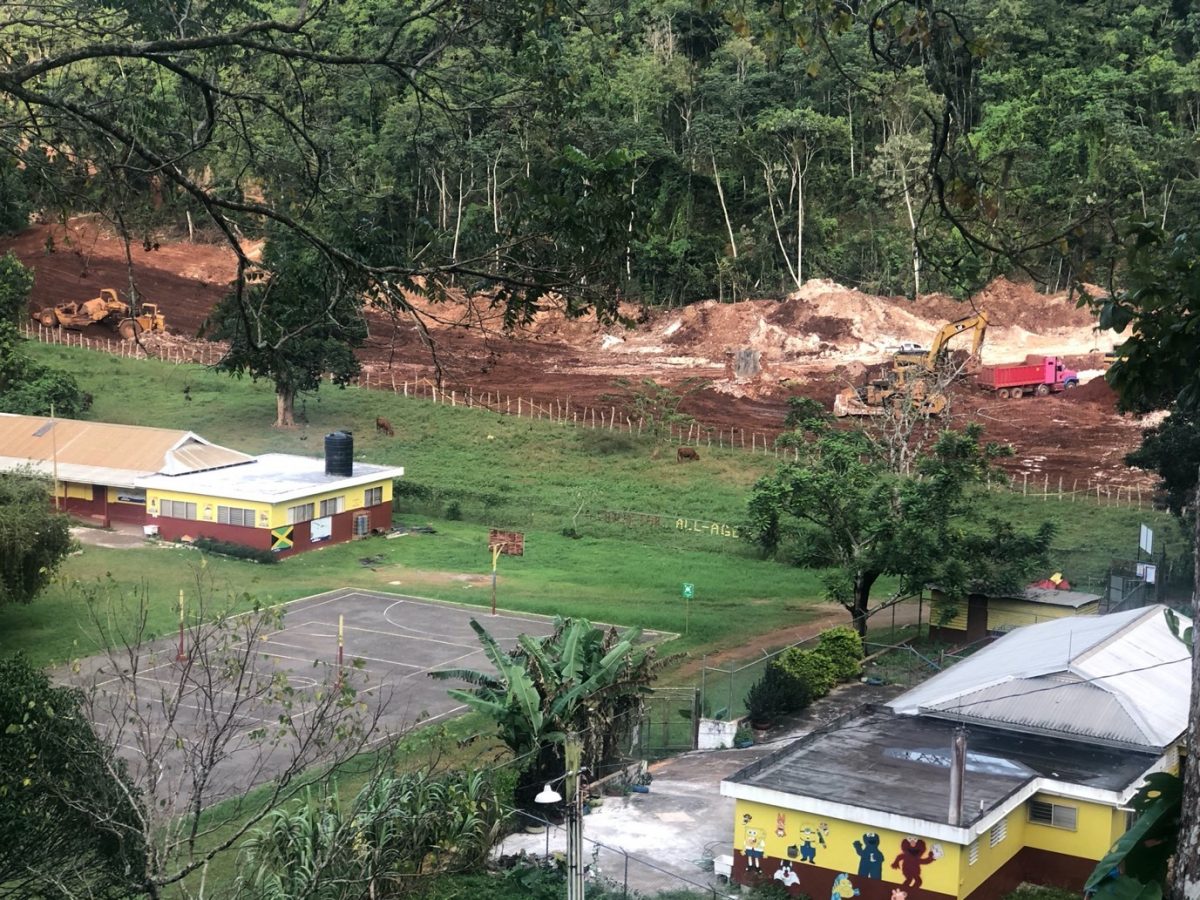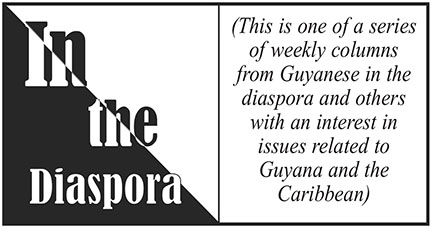Diana McCaulay is the founder, Director and former Chief Executive Officer of the Jamaica Environment Trust. She is an award-winning writer of several novels including a children’s book.
On December 8th, 2020, a long-awaited public consultation was held in Jamaica regarding the Environmental Impact Assessment (EIA) for an application to carry out bauxite mining in an important natural and historical area known as Cockpit Country. This is a name that resonates, not just in Jamaica, but all over the world, as it is the place where the Leeward Maroons fought the British to a standstill and to a treaty in 1739. Even today, Cockpit Country remains a symbol of resistance, struggle, and triumph for Jamaica’s African descendants.
What is at stake here and why is this debate so important? The mining of Cockpit Country will present risks for Jamaica’s water supply, its already fragile food security, and for the health and well-being of Jamaicans. Cockpit communities are examples of places where folks have creatively “made life” outside of mainstream development options. Their knowledge and their way of life have sustained them through times of great stress. Civil society groups, prominent reggae artists and community organizations have long opposed bauxite prospecting in this region and have expressed concerns about water, health hazards, safety, soil erosion and the destruction of rural lands and livelihoods. Thousands of Jamaicans have petitioned the state to prevent mining in the area.
The virtual 90-minute public consultation was made available via Zoom, YouTube, television, radio and there were also four satellite locations within Cockpit Country, where small numbers of people gathered to ask questions.
Despite this effort at inclusion, the obvious pro bauxite stance of the EIA Consultant, Dr Conrad Douglas, resulted in the consultation being called a sham by many, including Jamaica Environment Trust (JET), Southern Trelawny Environmental Agency (STEA), Wendy Lee and Robert Stephens of the Cockpit Country Stakeholders Group (CCSG) and other civil society advocates.
“Neither the EIA itself nor the public consultation displayed any genuine independence or willingness to interrogate a decision of major and long-term consequences for Jamaica, especially in the context of the climate crisis and Jamaica’s ability to contribute to carbon capture and storage,” said Dr Susan Koenig, of the Windsor Research Centre in Cockpit Country.
The meeting began with a public relations video from the applicant, Noranda Jamaica Bauxite Partners II. The panelists were Dr Douglas himself, Mr Delroy Dell and Ms Sheridah Nelson, both representatives of Noranda.
New Day Aluminium Jamaica Ltd. entered into an Agreement with the Government of Jamaica (GOJ) concerning the granting of Special Mining Lease (SML) 173 in August 2018. This agreement appointed Noranda Jamaica Bauxite Partners II (NJBP II) and Jamaica Bauxite Mining Ltd. as agents of New Day Aluminium Jamaica Ltd. Jamaica Bauxite Mining Ltd. is wholly owned by GOJ, so in effect, the Jamaican state is both proponent and regulator for this project. The agreement grants NJBP II the right to mine for bauxite on or under 120 square kilometres in the parishes of St Ann and Trelawny, as well as “such other lands as may be included” in the SML, for 23 years from August 28th, 2018. The Agreement requires an application for an environmental permit, and the December 8th public meeting and associated EIA formed part of that application process.
Efforts to protect Cockpit Country have been ongoing continuously for more than 25 years. This is Jamaica’s largest remaining natural forest on limestone, a sanctuary for extraordinary biological diversity, sitting over a large aquifer. The freshwater stored and released via almost 40 rivers, streams, springs, upwellings, glades and ponds supplies about 40% of Western Jamaica’s water needs, according to the Water Resources Authority.
The question of exactly where the boundary of Cockpit Country should be drawn has been contentious since 2006, when a coalition of environmental and civil society groups and local residents, termed the Cockpit Country Stakeholders Group (CCSG), proposed a boundary encompassing 116,218 hectares, including not only geomorphology, hydrology and biological diversity, but also history and culture. Six different boundaries were proposed by other stakeholders. A boundary study conducted by the University of the West Indies (UWI) and released in 2013 recommended a core, transition and outer boundary, with the outer boundary corresponding to the CCSG proposal, the largest of the suggested boundaries, and functioning as a buffer zone.
The UWI boundary study revealed the aspirations of those residents surveyed – their defense of the unique character of the area, the wish for watershed and natural resource protection as well as declaration as a National Park and World Heritage Site, and that economic opportunities for local communities should be part of the boundary discussion. According to the UWI study, “There is vehement opposition to bauxite mining and limestone quarrying within the Cockpit Country.”
In the years since then, civil society groups and local residents convened numerous community meetings, carried out on-the-ground community work, made presentations to regulators and ministers of government, led a Save Cockpit Country campaign and gathered over 34,000 signatures on a petition, both paper and online, which was delivered to the Prime Minister, the Most. Hon. Andrew Holness in 2017. Prime Minister Holness then announced the designated Cockpit Country Protected Area (CCPA) in Parliament in November 2017. The new CCPA encompassed 74,726 hectares or 64% of the proposed CCSG boundary. In his address, the Prime Minister stated the CCPA would be closed to mining. Although this was an undeniable step forward in the long struggle to protect the region, areas to the west, south and northeast were left out of the new CCPA. One of these omissions in the northeast includes the watershed of the Rio Bueno and many rural communities, including Gibraltar, Madras, Endeavour and historical Stewart Town. It is these areas which SML 173 covers.
SML 173 lies immediately adjacent to the CCPA and comprises 8,355 hectares in St. Ann and Trelawny. After the mining lease had been issued, but before the EIA process had commenced, and before an environmental permit had been granted, Noranda cut an illegal access road into the area covered by SML 173, which elicited an apology from Mr Dell of Noranda at the December 8th public consultation.
Residents of Ulster Spring, Alps and Sawyers in Trelawny and Madras, Barnstaple and Endeavour in St Ann have raised strong objections to the expansion of bauxite mining in or near to their communities. Local protests have been organized by Southern Trelawny Environmental Agency (STEA), Cockpit Country Coalition and Concerned Citizens, supported by representatives of the Maroons, Rastafari, popular entertainers such as Tony Rebel and Queen Ifrica, Cockpit Country Warriors and many others. Both pro and anti mining marches were staged to Jamaica’s Parliament building in September 2019.
Communities insist that impacts from mining affect their rainwater catchments, public health, quality of life and safety. Gibraltar residents point to the close proximity of a haul road to the Gibraltar All Age School. Some villages lie directly on the boundary. In the west, residents of Elderslie and Catadupa have similar concerns about bauxite prospecting activities, and many worry about reduced food security and damage to cultural and historical sites. While some residents welcome the prospect of employment, others are sceptical that the jobs will go to local people. Some communities outside the CCPA boundary but within SML 173 are adamant that they value their rural lives and livelihoods; they have seen what mining has done in other parts of Jamaica, and they do not want bauxite mining. They regard themselves as part of Cockpit Country and point to landforms, plants and animals, and historical features as proof of this. They also have detailed local knowledge about the underground water connections.
Fears remain about the impact of bauxite mining on water resources in and around Cockpit Country, specifically the Rio Bueno catchment area. The Prime Minister’s presentation in 2017 correctly referred to the existence of caves as evidence of underground hydrological connections, and SML 173 covers a very important aquifer recharge area. The risk of contamination or disruption of underground flows has been dismissed by the EIA and a 2017 review done by hydrologist Basil Fernandez, former Managing Director of the Water Resources Authority, asserted there was no evidence of contamination by mining itself over decades.
Dr Koenig, however, points out that the EIA itself describes, “…a slight increase in flow despite the diversion of the Cave River and the mining of bauxite within the Rio Bueno Sub Basin by Kaiser Bauxite, and successive companies over the past 50 years.” Dr Koenig explains: “The EIA failed to address the functional capacity which bauxite soils have to hold moisture. It didn’t account for the fact that mining will destroy the landscape’s ability to sequester almost 36 billion litres of water at any given moment in time. Without mining, this stored water either filters slowly down to recharge the aquifer or is drawn upwards by the roots of trees and agricultural crops. With the removal of deep soils by mining, rainfall rushes rapidly into the limestone component of the aquifer and flushes away from the area.”
At the December 8th public meeting, the EIA consultant said that if Noranda was not given permission to proceed with mining in SML 173, it would have to close, giving the impression that the decision had already been taken.
Chief Executive Officer of the National Environment and Planning Agency (NEPA), Peter Knight has since advised that due to “initial concerns”, a review of the public consultation was underway. “We will be meeting in house to take an in depth look at what transpired in order to establish whether the public was provided with enough information to understand the proposed mitigation measures and whether or not the guidelines were adhered to in the context of wider issues of environmental protection. We do not intend to make an a priori decision before this review, but there may have to be further discussions with Noranda and their EIA consultant, and possibly at the policy level,” he said.
There is also a 21-day comment period from the date of the consultation for objections or reviews to be submitted to NEPA. JET has already called for the rejection of the EIA in its entirety, due to lack of rigour and evident bias, and the rescheduling of an independent public consultation. Comments or objections during the 21-day comment period should be sent to applications@nepa.gov.jm
After the Dec 8 meeting, JET also decided to hold an alternative public meeting. This will now take place tonight, Monday, Dec 21, at 9 pm Jamaican time, and will be streamed live on Television Jamaica’s facebook page at: www.facebook.com/televisionjamaica
Comments or questions before the public meeting can be sent via Whatsapp to: 1-876-381-0072.
“Bauxite mining was never the solution to our economic problems,” says Ayesha Constable of Young People for Action on Climate Change Jamaica. “Given the growing threat of devastating climate change, any economic activity that further undermines our resilience is a stop gap action. We need our leaders to harness the innovative talents of young people to transform our societies away from fossil fuels and create more equitable and sustainable economies and societies.”
For more information about Cockpit country and to get involved, visit the following websites:
Windsor Research Centre: http://wrc.cockpitcountry.com/
JET: https://savecockpitcountry.org/
Southern Trelawny Environmental Agency: http://stea.net/


